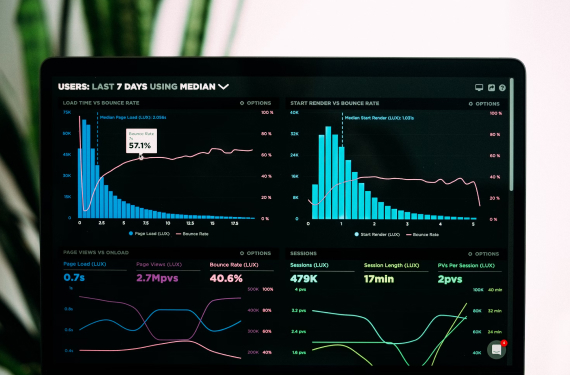About
LM3 (Local Multiplier 3) is a methodology that can be used by companies, government, or community organisations to measure how their spending generates local economic impact and benefit to communities.
LM3 (Local Multiplier 3) is a methodology that can be used by companies, government, or community organisations to measure how their spending generates local economic impact and benefit to communities.
More importantly, LM3 enables people to identify where changes need to be made to improve that impact. LM3 takes its name from the Keynesian multiplier, which has been used since the early 20th century to measure how income entering an economy then circulates within it.
The New Economics Foundation nef originally adapted the model for use at the local level, and this version measures three ’rounds’ of spending – hence Local Multiplier 3. The current version of the model has been significantly improved so that it now differentiates between local and non local impacts and can be used in live projects.

The tool was first applied on a large scale within Northumberland County Council where it was shown that:
Every £1 spent with a local supplier is worth £1.76 to the local economy, and only 36 pence if it is spent out of the local area. That makes £1 spent locally worth almost 400 % more to the local economy.
A ten per cent increase in the proportion of the council’s annual procurement spent locally would mean £34 million extra circulating in the local economy each year.
LM3 has now been applied to over £13 billion pounds of spending in public private and not for profit sectors. The tool was also used with all 26 of the local authorities in the North East of the United Kingdom with over £3.5 billion annual spending and 140,000 suppliers. Many large and medium sized enterpises now use the tool both to demonstrate the Social Value of their activity on local economies and as part of their Corporate Social Responsiblity sustainability programmes. The tool is also now widely used as the standard measure of both local economic impact and social value within public procurement processes thus creating a common mechanism for calculating public value.
In summary the additional benefits for the participants in an LM3Online project are:
Lm3Online provides an auditable, transparent, objective and directly comparable mechanism to measure local economic benefits from public and other spending in a community and to maximise local economic benefit from public spending decisions.
LM3Online provides an auditable, transparent, objective and directly comparable mechanism to prove added social and economic value of actively and sustainably managed supply chains.
LM3Online provides a free indicative figure of their contributions to the local economy that they can use in bidding processes as evidence of their local contribution.
More information can be found at these locations:
New Economics Foundation – Background and use of the tool
Measurement of Sustainable Procurement – Use of objective measures of social, economic, and environmental benefit
A local authority was interested in using some land that it owned for development purposes. Potential developers were asked to make proposals and to demonstrate how these would maximise social, economic, and environmental benefit to the local economies and communities. With the introduction of the Public Services (Social Value) Act tendering companies were asked to provide a measure of the Social Value provided. The company decided to use this opportunity as a way of generating an evidence base that they could apply to all their public sector work and embed this approach into their emerging Corporate and Social Responsibility Policy.
They used LM3 to demonstrate an auditable measure of benefit that showed that on average every pound spent generated £1.48 in the local economy and communities. Crucially by using this approach they were also able to show that where they used local suppliers this increased dramatically to £2.64.
The use of the model has increased tender success rate, reduced bid costs, and set the standard for their CSR policy.

Here are a few of the questions we get asked most frequently. However please do not hesitate to contact us directly if you do not find the answer you were looking for.
Yes we can issue a consultancy licence that will allow you to set up multiple different clients in addition to the multiple use and multiple supplier licences. We can even brand the model with your corporate style for you.
Yes. The Act neither defines nor indicates how to measure Social Value. While tools such as SROI can be useful in a descriptive sense they cannot be used within a public procurement environment. This means that the only tool that it is auditable and available to prove a ‘Social Value’ is LM3online.
Yes, the best way is to use our Impact Manager software. This was developed with Defra to enable organisations to measure the impact of economic, social and environmental measures. Please either contact us directly or check out the website.
This is entirely up to you and there are no restrictions on the tool. Often the size picks itself for example local government almost always use the political area for which they are accountable. Private companies tend to use a measure that is related to employment as this is usually a major part of the cost of a project. So for example they might use an area that includes where 80% of their employees/suppliers are based.
This is an important decision as the smaller the area the lower the LM3 is likely to be. This is one reason that we fight against the ‘my LM3 is bigger than yours’ approach. But hell you cant buck human nature.
The most important thing is communication. If the letter that you write to got out to your suppliers within the tool comes from the CEO and explains properly what and why you are doing then this is the most important element. The second most is to follow up those that don’t respond. In one LM3 with 140,000 suppliers the response rate (voluntary) rose from 36% to 48%.
The best way of all and this is how almost all our private sector clients’ use the tool is to include the completion as a condition of the contract. The public sector tends to be very poor at this but best practice is to include the completion in the original tender or framework.
Overview of the Live module with brief explanation and a full list of what data you will need to run the module.
Overview of the predictive module with brief explanation and how to use it as part of a tender submission.
Our new step by step guide to implementing LM3 (historic).
See an example report of an LM3 exercise (historic) as produced by the system.
A data upload template to see what data you need about your suppliers.





